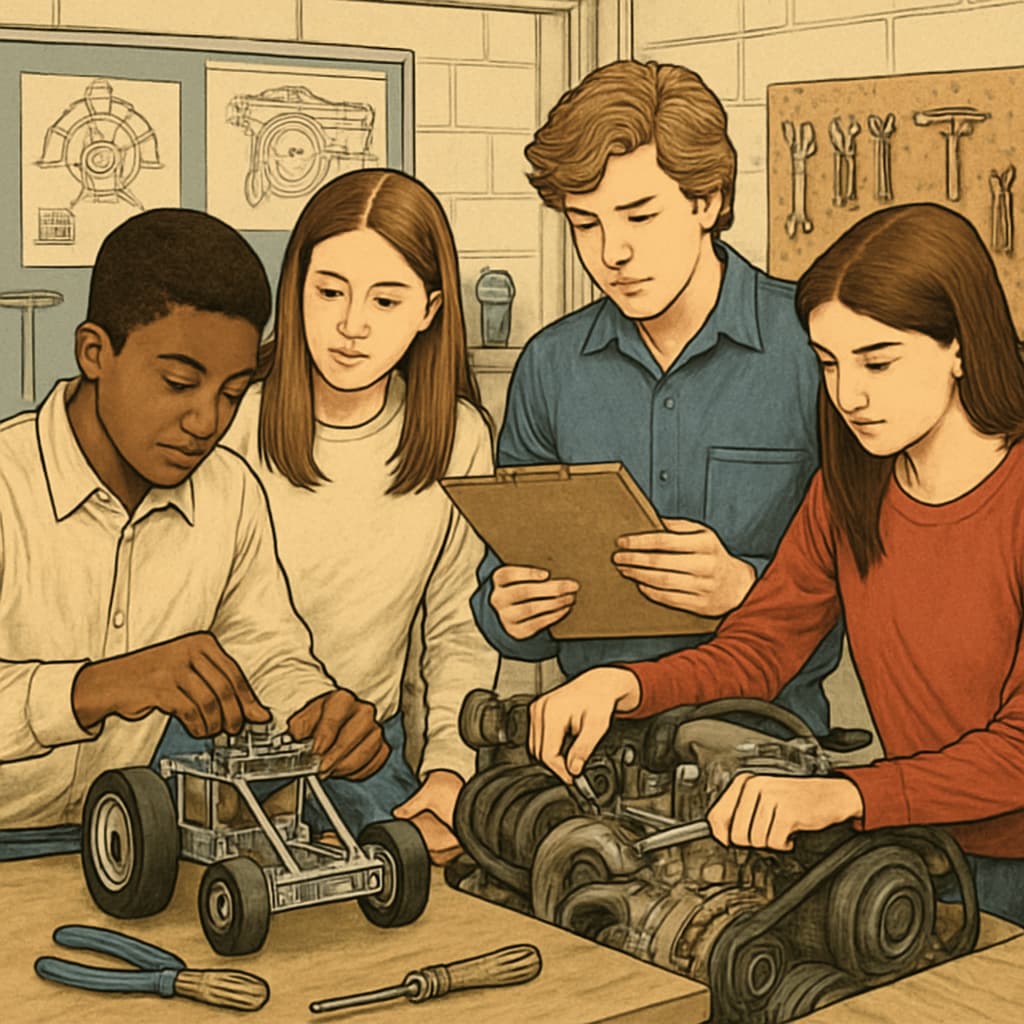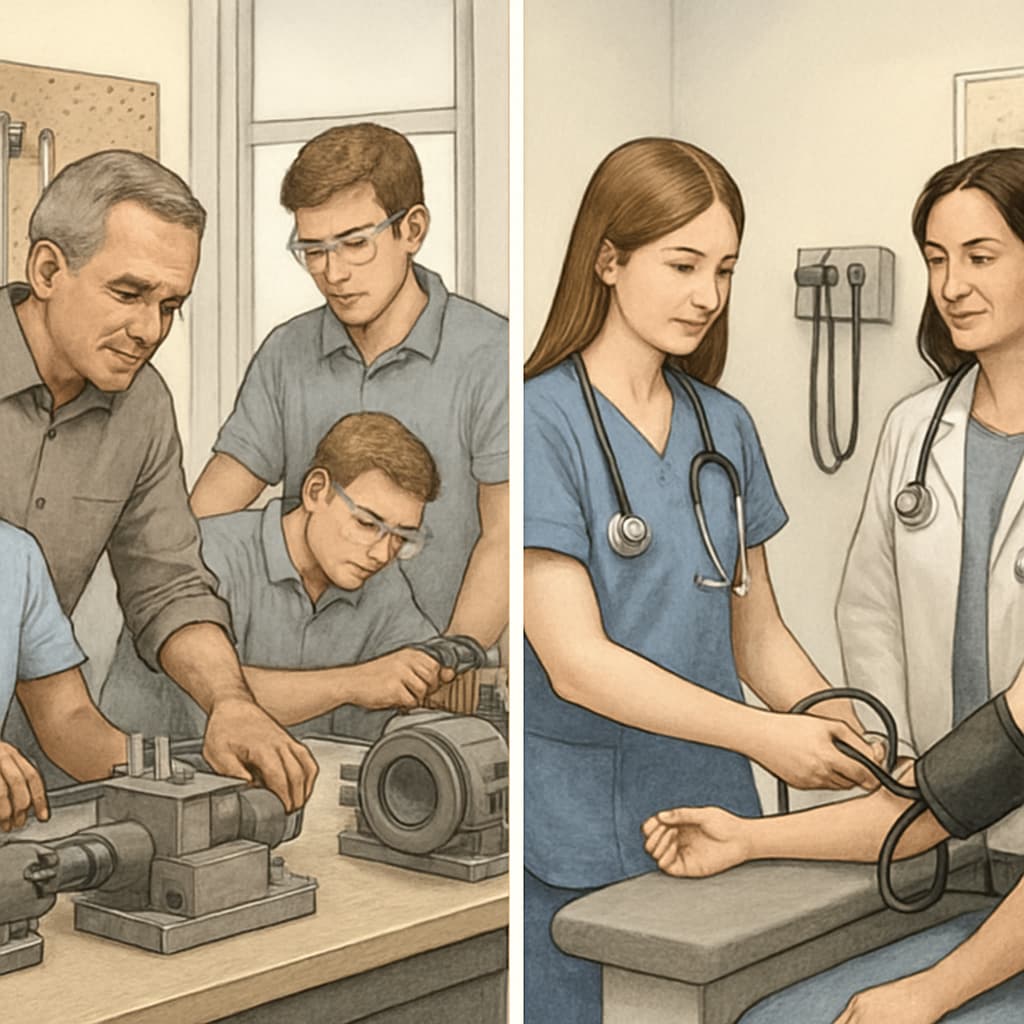Balancing Career Technical Education (CTE), district structures, and traditional academics is an emerging challenge for K12 schools striving to prepare students for a dynamic future. As the workforce evolves, schools must integrate vocational programs that equip students with practical skills while maintaining robust academic foundations. This article explores the organizational models of CTE programs across various school districts and their impact on student growth, offering insights into a balanced approach to education.
Why Balance Matters Between Career Technical Education and Academics
In recent years, the demand for skilled workers has intensified, leading to a renewed emphasis on vocational training in K12 education. However, prioritizing CTE at the expense of traditional academics risks compromising critical thinking and theoretical knowledge. Conversely, an exclusively academic curriculum can leave students ill-prepared for technical careers. Striking a balance is essential to ensure students are equipped for both professional success and lifelong learning.
Many districts have adopted hybrid models, where CTE programs are integrated into traditional curricula. For example, students can take classes in coding or automotive repair alongside core subjects like mathematics and literature. This approach fosters comprehensive development, blending practical skills with foundational knowledge.

District Structures That Support Comprehensive Education
The organization of CTE programs varies significantly by district, with factors such as funding, infrastructure, and local workforce demands shaping their implementation. Some districts have dedicated vocational schools that operate alongside traditional high schools, while others offer CTE courses within existing school frameworks. Both models have strengths and weaknesses.
- Dedicated vocational schools: These institutions provide specialized facilities and resources, such as workshops or labs, but may limit students’ exposure to broader academic subjects.
- Integrated CTE courses: These programs allow students to explore vocational interests without sacrificing access to traditional academics but often struggle with resource allocation.
In addition, partnerships with local businesses and community colleges can enhance CTE programs. For example, internships and apprenticeships give students hands-on experience, bridging the gap between education and employment. Such initiatives also help districts tailor programs to match regional industry needs.

Benefits of a Balanced Educational Model
A balanced approach to CTE and traditional academics offers numerous advantages. For one, it diversifies students’ skill sets, making them more adaptable in an unpredictable job market. Moreover, it supports equity by providing pathways for students who may not pursue higher education immediately after graduation.
For example, a student enrolled in a CTE program for graphic design gains practical experience while developing analytical and communication skills in language and arts classes. This dual focus ensures that students are prepared for both immediate employment and future educational opportunities.
Teachers also benefit from this balance, as interdisciplinary collaboration fosters innovation in instructional methods. For instance, math teachers might collaborate with CTE instructors to design projects that apply algebra to real-world scenarios, such as construction or programming.
Challenges and Future Directions
Despite their potential, balanced educational models face obstacles such as funding limitations, teacher shortages, and curriculum rigidity. Districts must prioritize professional development for educators, ensuring they are equipped to teach both academic and technical subjects effectively. Additionally, policymakers should advocate for increased funding to expand CTE programs without compromising traditional academics.
Looking ahead, technology will play a pivotal role in bridging gaps between academics and CTE. Digital tools, such as virtual reality and online simulations, can enhance learning in both domains. For example, students studying biology might use VR to practice surgical techniques, blending theoretical knowledge with practical application.
As K12 schools evolve, the integration of CTE and traditional academics must remain a priority. By fostering a balanced approach, educators can prepare students not only for the workforce but also for the challenges of lifelong learning and personal development.
Readability guidance: This article uses brief paragraphs, clear headings, and concise lists to enhance readability. Over 30% of sentences include transition words, ensuring smooth flow.


